filter
-
Brand
- By Category
- Direction
- Date Range
134Events
Pictures
Events
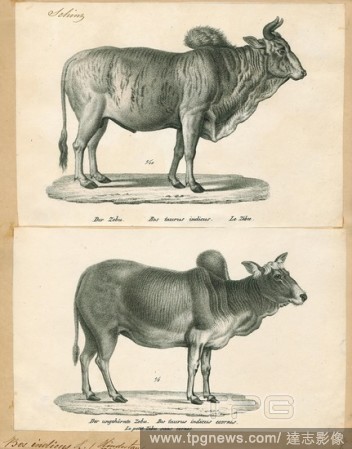
Editorial Bos indicus, Print, A zebu, sometimes known as indicine cattle or humped cattle, is a species or subspecies of domestic cattle originating in South Asia. Zebu are characterised by a fatty hump on their shoulders, a large dewlap, and sometimes drooping ...
- 2020-01-15
- 1

Editorial Elateres. Springk?fer 4, 30. Elater Buprestoides, 31. Elater Flabellicornis, 32. Elater Maculosus Indicus, 33. Elater Ocellatus, 34. Elater Flabellicornis, 35. Elater Heterogenus, Date Appreciated, Table XLV, after p, Voet, Johannes Eusebius (del.); Bi...
- 2020-01-15
- 1
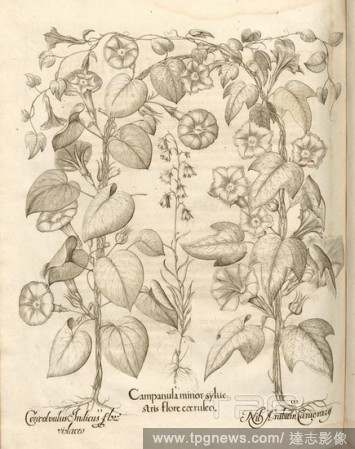
Editorial Convolvulus Indicus violet flower, Campanula minor sylvestris flower coeruleo, Winds, Bluebells, Copperplate, S. 660, Besler, Basilius; Jungermann, Ludwig, 1713, Basilius Besler: Hortus Eystettensis (...). N?rnberg, 1713.
- 2020-01-15
- 1
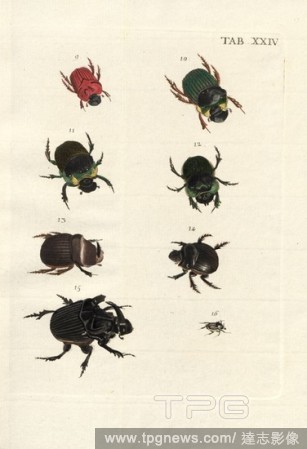
Editorial Copris. Mistk?fer 2, 9. Copris Coccineus, 10th Copris Isequeboensis Femina, 11th Corporis Noveboracus, 12th Copris Curacaoensis, 13th Copris Planiceps, 14th Copris Obesus Occidentalis Indicus, 15th Iugifer, 16th Caput Bovillum, Tab., XXIV, after p. 134...
- 2020-01-15
- 1
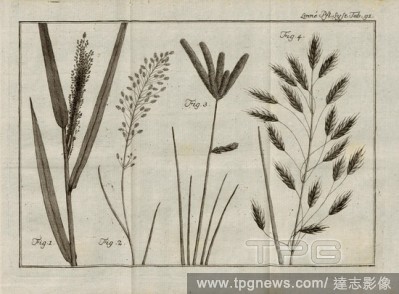
Editorial Grasses 5, Fig. 1: Aira arundinacea from Japan, Fig. 2: Poa amalbilis from Java, Fig. 3: Cynosurus indicus from Japan, Fig. 4: Bromus arvensis from Japan, plate 91, p, . 857, 1785, Carl von Linn?: Des Ritters Carl von Linn? [...] vollst?ndiges Pflanzen...
- 2020-01-15
- 1
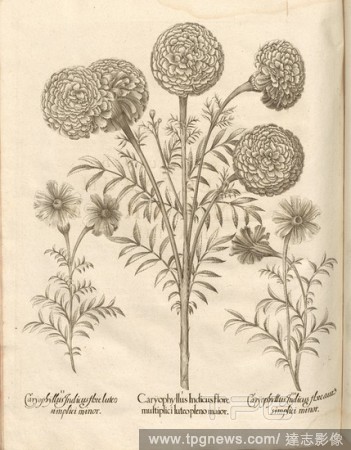
Editorial Caryophyllus Indicus ..., Carnations, Copperplate, S. 670, Besler, Basilius; Jungermann, Ludwig, 1713, Basilius Besler: Hortus Eystettensis (...). N?rnberg, 1713.
- 2020-01-15
- 1

Editorial Black crowned crane (Balearica pavonina), Strutio indicus, pavo / L'oiseau Roijal (title on object), Black crowned crane bird. Numbered top right: 23. Left the Latin name. Part of the third album with drawings of birds. Fifth of twelve albums with draw...
- 2020-01-15
- 1

Editorial Indian Elephant. Elephas Indicus., Unknown, about 1860, Albumen silver print.
- 2019-11-19
- 1
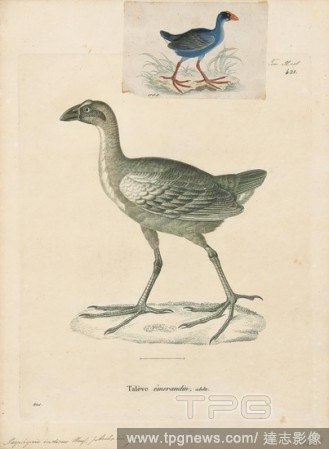
Editorial Porphyrio indicus, Print, The black-backed swamphen (Porphyrio indicus) is a species of swamphen occurring from southeast Asia to Sulawesi and Borneo. It used to be considered a subspecies of the purple swamphen, which it resembles, but has a large shi...
- 2019-11-18
- 1
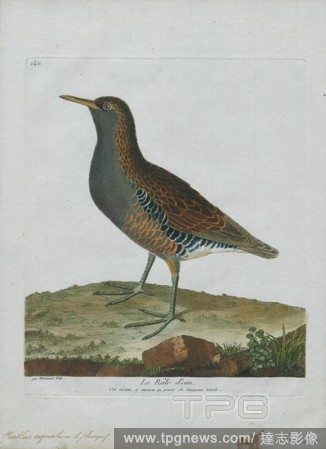
Editorial Rallus aquaticus, Print, The water rail (Rallus aquaticus) is a bird of the rail family which breeds in well-vegetated wetlands across Europe, Asia and North Africa. Northern and eastern populations are migratory, but this species is a permanent reside...
- 2019-11-18
- 2
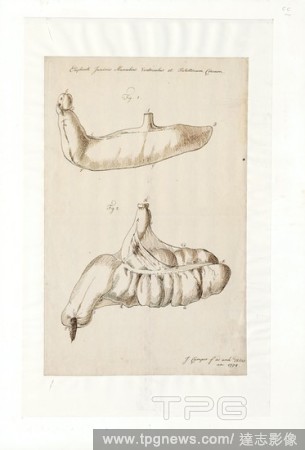
Editorial Elephas maximus, Print, The Asian elephant (Elephas maximus), also called Asiatic elephant, is the only living species of the genus Elephas and is distributed throughout the Indian subcontinent and Southeast Asia, from India in the west, Nepal in the n...
- 2019-11-18
- 1

Editorial Elephas indicus, Print, Elephas is one of two surviving genera in the family of elephants, Elephantidae, with one surviving species, the Asian elephant, Elephas maximus., 1884.
- 2019-11-18
- 1

Editorial Elephas indicus, Print, Elephas is one of two surviving genera in the family of elephants, Elephantidae, with one surviving species, the Asian elephant, Elephas maximus., 1700-1880.
- 2019-11-18
- 1

Editorial Elephas indicus, Print, Elephas is one of two surviving genera in the family of elephants, Elephantidae, with one surviving species, the Asian elephant, Elephas maximus., 1722-1789.
- 2019-11-18
- 1
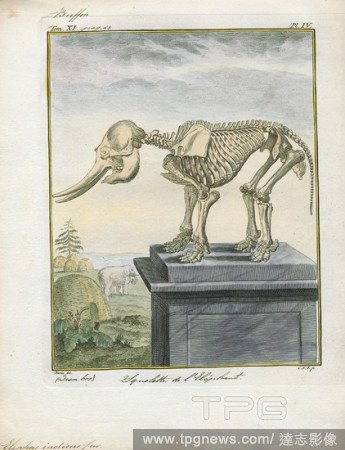
Editorial Elephas indicus, Print, Elephas is one of two surviving genera in the family of elephants, Elephantidae, with one surviving species, the Asian elephant, Elephas maximus., skeleton.
- 2019-11-18
- 1
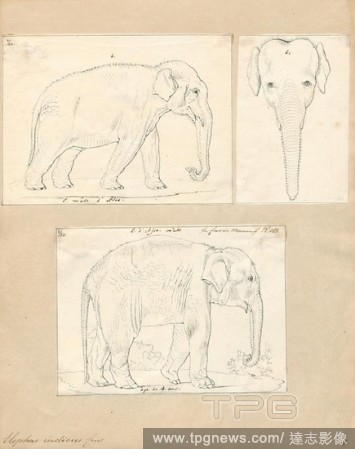
Editorial Elephas indicus, Print, Elephas is one of two surviving genera in the family of elephants, Elephantidae, with one surviving species, the Asian elephant, Elephas maximus., 1700-1880.
- 2019-11-18
- 2

Editorial Sorex indicus, Print, The genus Sorex includes many of the common shrews of Eurasia and North America, and contains at least 142 known species and subspecies. Members of this genus, known as long-tailed shrews, are the only members of the tribe Soricin...
- 2019-11-18
- 1
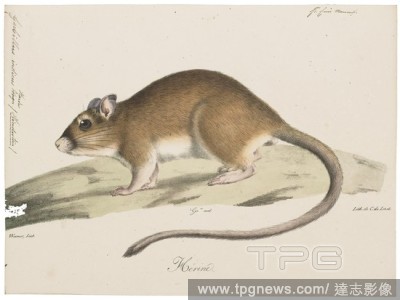
Editorial Gerbillus indicus, Print, Gerbillus is a genus that contains most common and the most diverse gerbils. In 2010, after morphological and molecular studies Dipodillus was ranged as a subgenus of Gerbillus, however some taxonomic authorities continue to s...
- 2019-11-18
- 1
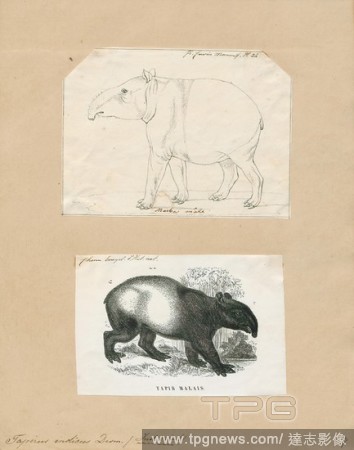
Editorial Tapirus indicus, Print, The Malayan tapir (Tapirus indicus), also called the Asian tapir, Asiatic tapir, Oriental tapir, Indian tapir, or piebald tapir, is the largest of the five species of tapir and the only one native to Asia. The scientific name re...
- 2019-11-18
- 1
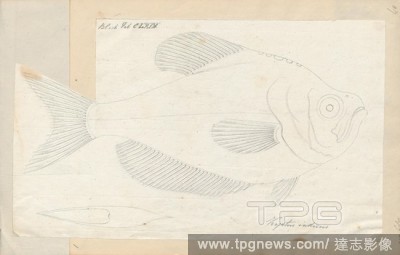
Editorial Kurtus indicus, Print, Kurtus indicus, the Indian humphead, is a species of nurseryfish native to fresh, brackish, and marine waters of the coastal regions of southern Asia from India to southeast China and Indonesia. It resembles the closely related K...
- 2019-11-18
- 1

Editorial Elephas indicus, Print, Elephas is one of two surviving genera in the family of elephants, Elephantidae, with one surviving species, the Asian elephant, Elephas maximus., skeleton.
- 2019-11-18
- 1
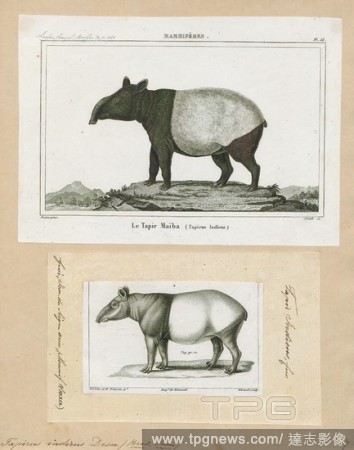
Editorial Tapirus indicus, Print, The Malayan tapir (Tapirus indicus), also called the Asian tapir, Asiatic tapir, Oriental tapir, Indian tapir, or piebald tapir, is the largest of the five species of tapir and the only one native to Asia. The scientific name re...
- 2019-11-18
- 1
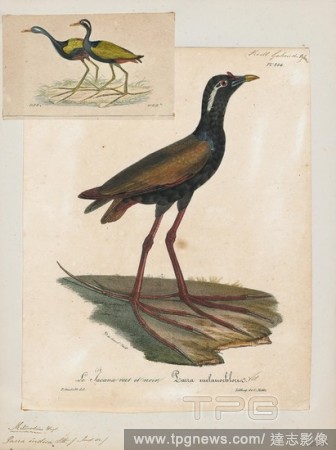
Editorial Parra indica, Print, The bronze-winged jacana (Metopidius indicus) is a wader in the family Jacanidae. Like other jacanas it forages on lilies and other floating aquatic vegetation, the long feet spreading out its weight and preventing sinking. It is f...
- 2019-11-18
- 2
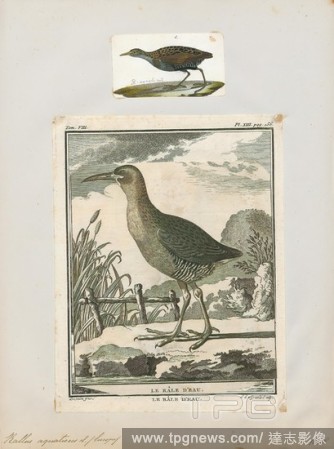
Editorial Rallus aquaticus, Print, The water rail (Rallus aquaticus) is a bird of the rail family which breeds in well-vegetated wetlands across Europe, Asia and North Africa. Northern and eastern populations are migratory, but this species is a permanent reside...
- 2019-11-18
- 1

Editorial Elephas indicus, Print, Elephas is one of two surviving genera in the family of elephants, Elephantidae, with one surviving species, the Asian elephant, Elephas maximus., 1700-1880.
- 2019-11-18
- 1

Editorial Elephas indicus, Print, Elephas is one of two surviving genera in the family of elephants, Elephantidae, with one surviving species, the Asian elephant, Elephas maximus., 1700-1880.
- 2019-11-18
- 1
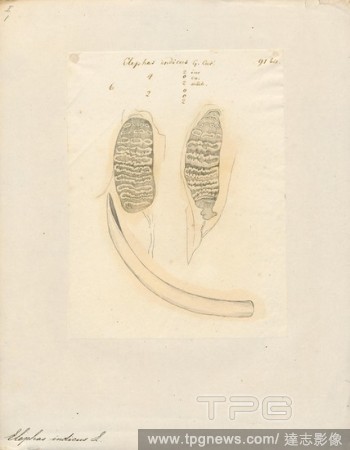
Editorial Elephas indicus, Print, Elephas is one of two surviving genera in the family of elephants, Elephantidae, with one surviving species, the Asian elephant, Elephas maximus., teeth.
- 2019-11-18
- 2
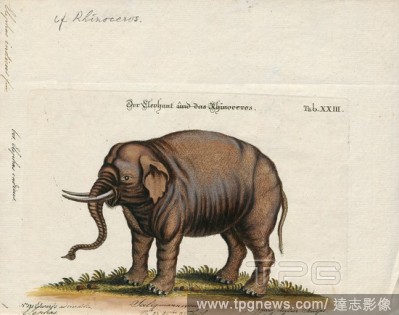
Editorial Elephas indicus, Print, Elephas is one of two surviving genera in the family of elephants, Elephantidae, with one surviving species, the Asian elephant, Elephas maximus., 1700-1880.
- 2019-11-18
- 2
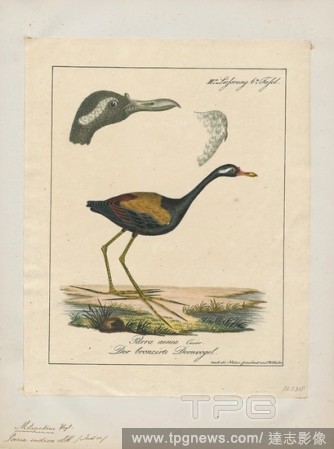
Editorial Parra indica, Print, The bronze-winged jacana (Metopidius indicus) is a wader in the family Jacanidae. Like other jacanas it forages on lilies and other floating aquatic vegetation, the long feet spreading out its weight and preventing sinking. It is f...
- 2019-11-18
- 1
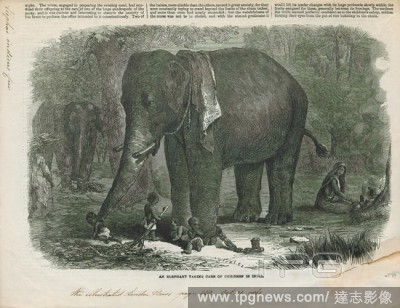
Editorial Elephas indicus, Print, Elephas is one of two surviving genera in the family of elephants, Elephantidae, with one surviving species, the Asian elephant, Elephas maximus., 1863.
- 2019-11-18
- 2

Editorial Elephas indicus, Print, Elephas is one of two surviving genera in the family of elephants, Elephantidae, with one surviving species, the Asian elephant, Elephas maximus., 1864.
- 2019-11-18
- 1

Editorial Bos indicus, Print, A zebu, sometimes known as indicine cattle or humped cattle, is a species or subspecies of domestic cattle originating in South Asia. Zebu are characterised by a fatty hump on their shoulders, a large dewlap, and sometimes drooping ...
- 2019-11-18
- 1

Editorial Elephas indicus, Print, Elephas is one of two surviving genera in the family of elephants, Elephantidae, with one surviving species, the Asian elephant, Elephas maximus., 1700-1880.
- 2019-11-18
- 1
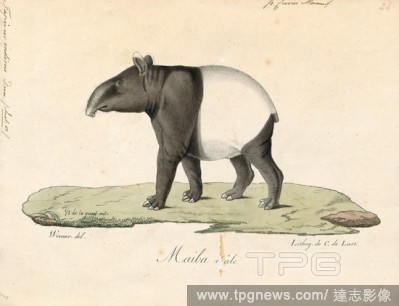
Editorial Tapirus indicus, Print, The Malayan tapir (Tapirus indicus), also called the Asian tapir, Asiatic tapir, Oriental tapir, Indian tapir, or piebald tapir, is the largest of the five species of tapir and the only one native to Asia. The scientific name re...
- 2019-11-18
- 1

Editorial Elephas maximus, Print, The Asian elephant (Elephas maximus), also called Asiatic elephant, is the only living species of the genus Elephas and is distributed throughout the Indian subcontinent and Southeast Asia, from India in the west, Nepal in the n...
- 2019-11-18
- 1
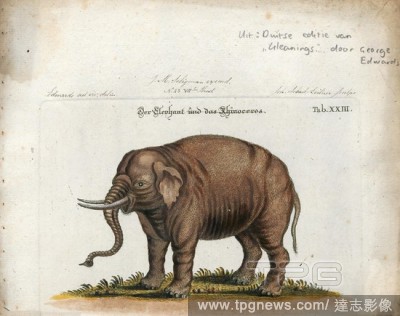
Editorial Elephas indicus, Print, Elephas is one of two surviving genera in the family of elephants, Elephantidae, with one surviving species, the Asian elephant, Elephas maximus., 1700-1880.
- 2019-11-18
- 2
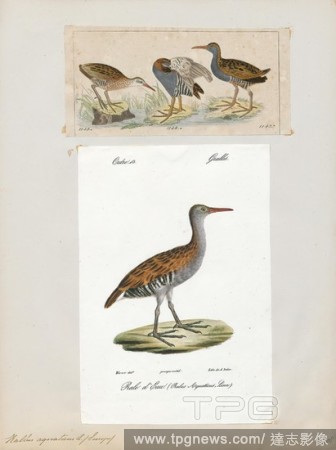
Editorial Rallus aquaticus, Print, The water rail (Rallus aquaticus) is a bird of the rail family which breeds in well-vegetated wetlands across Europe, Asia and North Africa. Northern and eastern populations are migratory, but this species is a permanent reside...
- 2019-11-18
- 1

Editorial Sciurus indicus, Print, The genus Sciurus contains most of the common, bushy-tailed squirrels in North America, Europe, temperate Asia, Central America and South America., 1700-1880.
- 2019-11-18
- 1
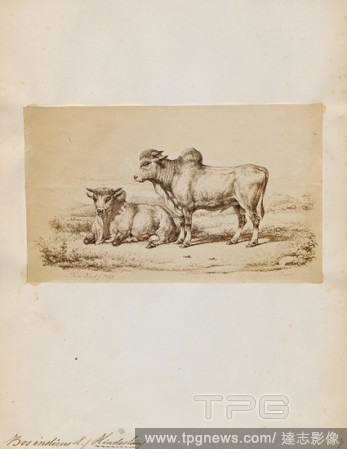
Editorial Bos indicus, Print, A zebu, sometimes known as indicine cattle or humped cattle, is a species or subspecies of domestic cattle originating in South Asia. Zebu are characterised by a fatty hump on their shoulders, a large dewlap, and sometimes drooping ...
- 2019-11-18
- 1
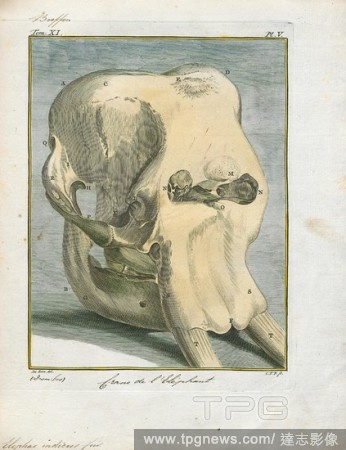
Editorial Elephas indicus, Print, Elephas is one of two surviving genera in the family of elephants, Elephantidae, with one surviving species, the Asian elephant, Elephas maximus., skull.
- 2019-11-18
- 1
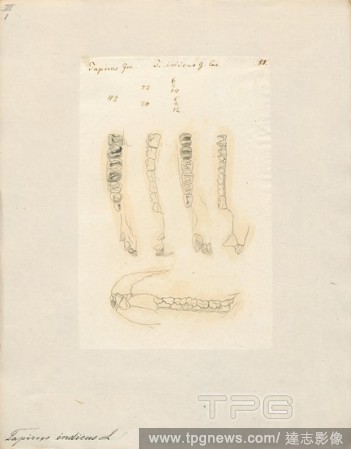
Editorial Tapirus indicus, Print, The Malayan tapir (Tapirus indicus), also called the Asian tapir, Asiatic tapir, Oriental tapir, Indian tapir, or piebald tapir, is the largest of the five species of tapir and the only one native to Asia. The scientific name re...
- 2019-11-18
- 1

Editorial Elephas indicus, Print, Elephas is one of two surviving genera in the family of elephants, Elephantidae, with one surviving species, the Asian elephant, Elephas maximus., 1700-1880.
- 2019-11-18
- 1
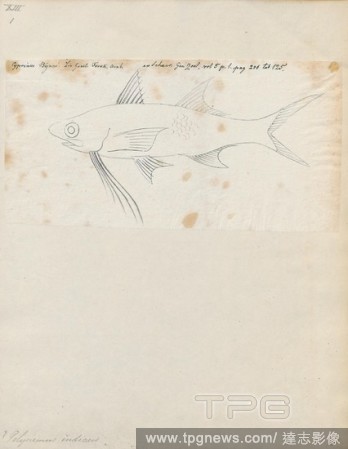
Editorial Polynemus indicus, Print, 1700-1880.
- 2019-11-18
- 1
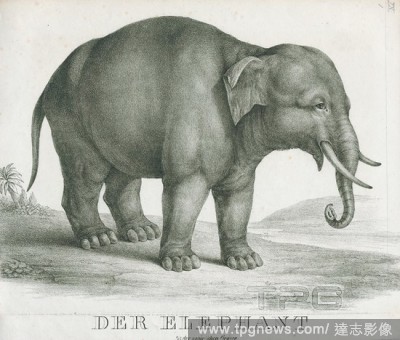
Editorial Elephas indicus, Print, Elephas is one of two surviving genera in the family of elephants, Elephantidae, with one surviving species, the Asian elephant, Elephas maximus., 1700-1880.
- 2019-11-18
- 1

Editorial Elephas indicus, Print, Elephas is one of two surviving genera in the family of elephants, Elephantidae, with one surviving species, the Asian elephant, Elephas maximus., 1700-1880.
- 2019-11-18
- 1
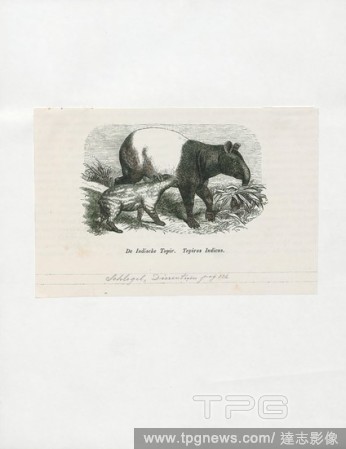
Editorial Tapirus indicus, Print, The Malayan tapir (Tapirus indicus), also called the Asian tapir, Asiatic tapir, Oriental tapir, Indian tapir, or piebald tapir, is the largest of the five species of tapir and the only one native to Asia. The scientific name re...
- 2019-11-18
- 1

Editorial Elephas indicus, Print, Elephas is one of two surviving genera in the family of elephants, Elephantidae, with one surviving species, the Asian elephant, Elephas maximus., 1858.
- 2019-11-18
- 1

Editorial Elephas maximus, Print, The Asian elephant (Elephas maximus), also called Asiatic elephant, is the only living species of the genus Elephas and is distributed throughout the Indian subcontinent and Southeast Asia, from India in the west, Nepal in the n...
- 2019-11-18
- 1

Editorial Elephas indicus, Print, Elephas is one of two surviving genera in the family of elephants, Elephantidae, with one surviving species, the Asian elephant, Elephas maximus., jaw.
- 2019-11-18
- 1
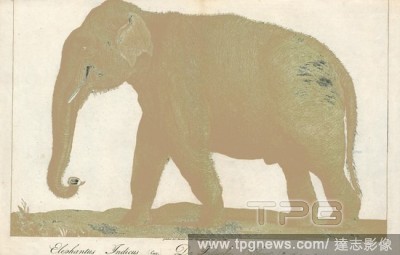
Editorial Elephas indicus, Print, Elephas is one of two surviving genera in the family of elephants, Elephantidae, with one surviving species, the Asian elephant, Elephas maximus., 1700-1880.
- 2019-11-18
- 1
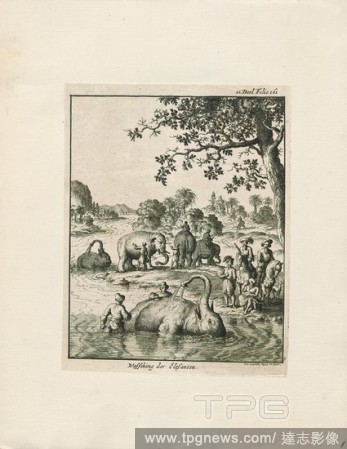
Editorial Elephas indicus, Print, Elephas is one of two surviving genera in the family of elephants, Elephantidae, with one surviving species, the Asian elephant, Elephas maximus., 1700-1880.
- 2019-11-18
- 1

Editorial Elephas indicus, Print, Elephas is one of two surviving genera in the family of elephants, Elephantidae, with one surviving species, the Asian elephant, Elephas maximus., 1866.
- 2019-11-18
- 1
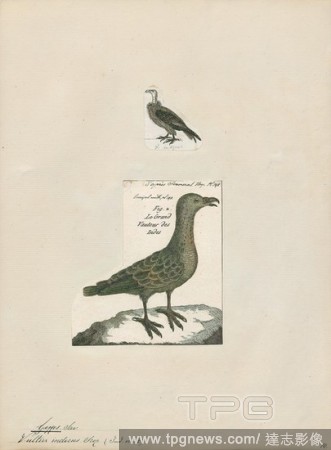
Editorial Gyps indicus, Print, The Indian vulture (Gyps indicus) is an Old World vulture native to India, Pakistan and Nepal. It has been listed as Critically Endangered on the IUCN Red List since 2002, as the population severely declined. Indian vultures died o...
- 2019-11-18
- 1
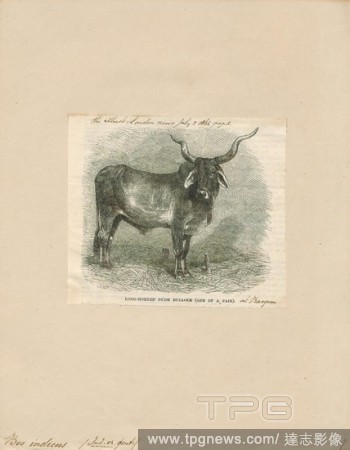
Editorial Bos indicus, Print, A zebu, sometimes known as indicine cattle or humped cattle, is a species or subspecies of domestic cattle originating in South Asia. Zebu are characterised by a fatty hump on their shoulders, a large dewlap, and sometimes drooping ...
- 2019-11-18
- 1

Editorial Elephas indicus, Print, Elephas is one of two surviving genera in the family of elephants, Elephantidae, with one surviving species, the Asian elephant, Elephas maximus., 1700-1880.
- 2019-11-18
- 1
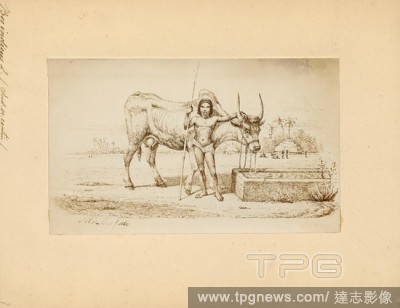
Editorial Bos indicus, Print, A zebu, sometimes known as indicine cattle or humped cattle, is a species or subspecies of domestic cattle originating in South Asia. Zebu are characterised by a fatty hump on their shoulders, a large dewlap, and sometimes drooping ...
- 2019-11-18
- 2

Editorial Elephas maximus, Print, The Asian elephant (Elephas maximus), also called Asiatic elephant, is the only living species of the genus Elephas and is distributed throughout the Indian subcontinent and Southeast Asia, from India in the west, Nepal in the n...
- 2019-11-18
- 1

Editorial Elephas indicus, Print, Elephas is one of two surviving genera in the family of elephants, Elephantidae, with one surviving species, the Asian elephant, Elephas maximus., 1700-1880.
- 2019-11-18
- 2

Editorial Elephas indicus, Print, Elephas is one of two surviving genera in the family of elephants, Elephantidae, with one surviving species, the Asian elephant, Elephas maximus., 1857.
- 2019-11-18
- 1
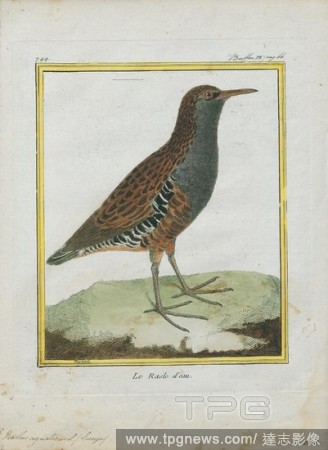
Editorial Rallus aquaticus, Print, The water rail (Rallus aquaticus) is a bird of the rail family which breeds in well-vegetated wetlands across Europe, Asia and North Africa. Northern and eastern populations are migratory, but this species is a permanent reside...
- 2019-11-18
- 1

Editorial Elephas indicus, Print, Elephas is one of two surviving genera in the family of elephants, Elephantidae, with one surviving species, the Asian elephant, Elephas maximus., 1756.
- 2019-11-18
- 1

Editorial Rhinoceros indicus, Print, The Indian rhinoceros (Rhinoceros unicornis), also called the greater one-horned rhinoceros and great Indian rhinoceros, is a rhinoceros native to the Indian subcontinent. It is listed as Vulnerable on the IUCN Red List, as p...
- 2019-11-18
- 2

Editorial Elephas indicus, Print, Elephas is one of two surviving genera in the family of elephants, Elephantidae, with one surviving species, the Asian elephant, Elephas maximus., 1864.
- 2019-11-18
- 2

Editorial Bos taurus indicus, Print, A zebu, sometimes known as indicine cattle or humped cattle, is a species or subspecies of domestic cattle originating in South Asia. Zebu are characterised by a fatty hump on their shoulders, a large dewlap, and sometimes dr...
- 2019-11-18
- 1
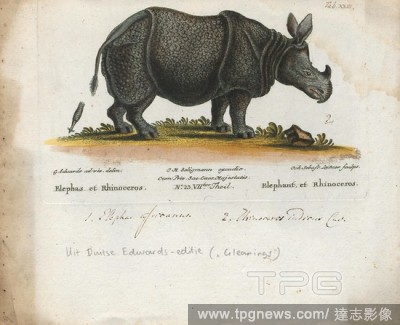
Editorial Rhinoceros indicus, Print, The Indian rhinoceros (Rhinoceros unicornis), also called the greater one-horned rhinoceros and great Indian rhinoceros, is a rhinoceros native to the Indian subcontinent. It is listed as Vulnerable on the IUCN Red List, as p...
- 2019-11-18
- 1
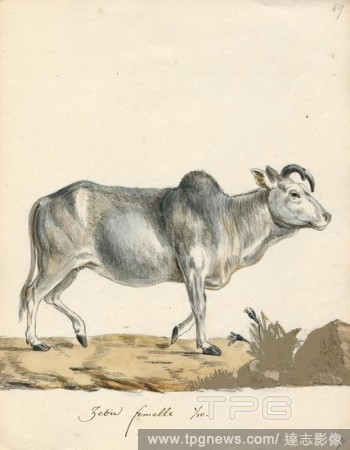
Editorial Bos indicus, Print, A zebu, sometimes known as indicine cattle or humped cattle, is a species or subspecies of domestic cattle originating in South Asia. Zebu are characterised by a fatty hump on their shoulders, a large dewlap, and sometimes drooping ...
- 2019-11-18
- 1
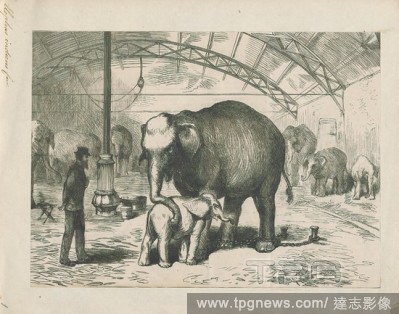
Editorial Elephas indicus, Print, Elephas is one of two surviving genera in the family of elephants, Elephantidae, with one surviving species, the Asian elephant, Elephas maximus., 1700-1880.
- 2019-11-18
- 1

Editorial Elephas maximus, Print, The Asian elephant (Elephas maximus), also called Asiatic elephant, is the only living species of the genus Elephas and is distributed throughout the Indian subcontinent and Southeast Asia, from India in the west, Nepal in the n...
- 2019-11-18
- 1

Editorial Polynemus indicus, Print, 1700-1880.
- 2019-11-18
- 1
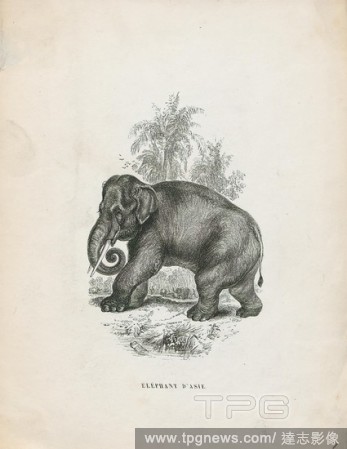
Editorial Elephas indicus, Print, Elephas is one of two surviving genera in the family of elephants, Elephantidae, with one surviving species, the Asian elephant, Elephas maximus., 1700-1880.
- 2019-11-18
- 1
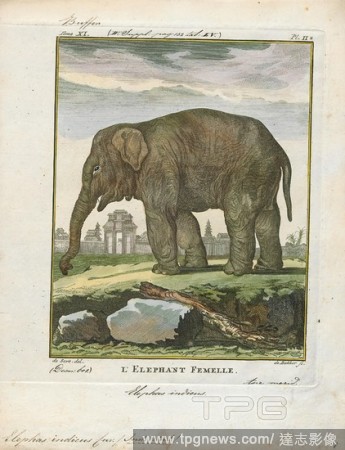
Editorial Elephas indicus, Print, Elephas is one of two surviving genera in the family of elephants, Elephantidae, with one surviving species, the Asian elephant, Elephas maximus., 1700-1880.
- 2019-11-18
- 1

Editorial Elephas indicus, Print, Elephas is one of two surviving genera in the family of elephants, Elephantidae, with one surviving species, the Asian elephant, Elephas maximus., 1774.
- 2019-11-18
- 1
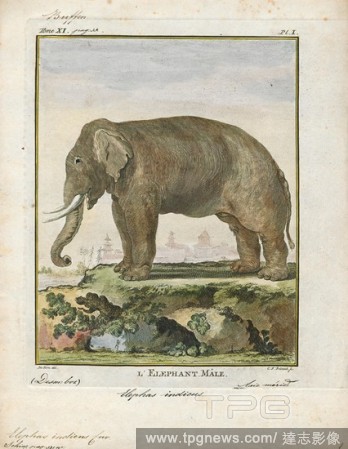
Editorial Elephas indicus, Print, Elephas is one of two surviving genera in the family of elephants, Elephantidae, with one surviving species, the Asian elephant, Elephas maximus., 1700-1880.
- 2019-11-18
- 1
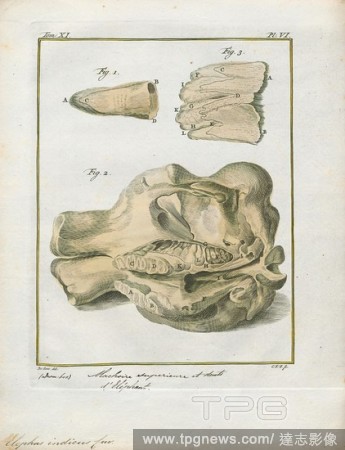
Editorial Elephas indicus, Print, Elephas is one of two surviving genera in the family of elephants, Elephantidae, with one surviving species, the Asian elephant, Elephas maximus., skull.
- 2019-11-18
- 1
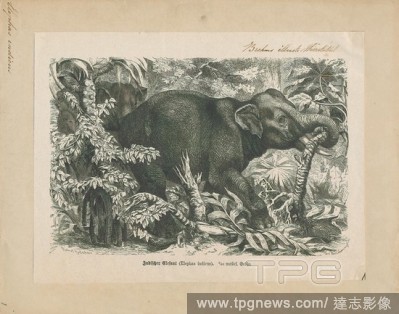
Editorial Elephas indicus, Print, Elephas is one of two surviving genera in the family of elephants, Elephantidae, with one surviving species, the Asian elephant, Elephas maximus., 1700-1880.
- 2019-11-18
- 1

Editorial Bos indicus, Print, A zebu, sometimes known as indicine cattle or humped cattle, is a species or subspecies of domestic cattle originating in South Asia. Zebu are characterised by a fatty hump on their shoulders, a large dewlap, and sometimes drooping ...
- 2019-11-18
- 1

Editorial Elephas indicus, Print, Elephas is one of two surviving genera in the family of elephants, Elephantidae, with one surviving species, the Asian elephant, Elephas maximus., 1871.
- 2019-11-18
- 1
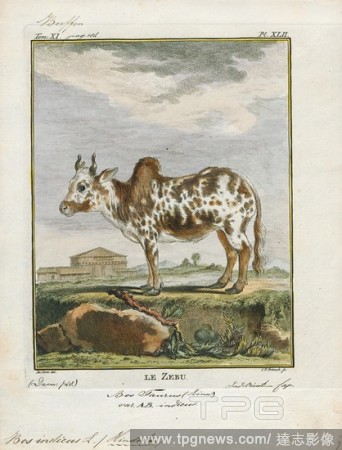
Editorial Bos indicus, Print, A zebu, sometimes known as indicine cattle or humped cattle, is a species or subspecies of domestic cattle originating in South Asia. Zebu are characterised by a fatty hump on their shoulders, a large dewlap, and sometimes drooping ...
- 2019-11-18
- 1
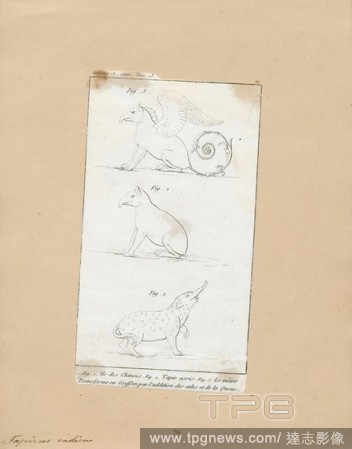
Editorial Tapirus indicus, Print, The Malayan tapir (Tapirus indicus), also called the Asian tapir, Asiatic tapir, Oriental tapir, Indian tapir, or piebald tapir, is the largest of the five species of tapir and the only one native to Asia. The scientific name re...
- 2019-11-18
- 1
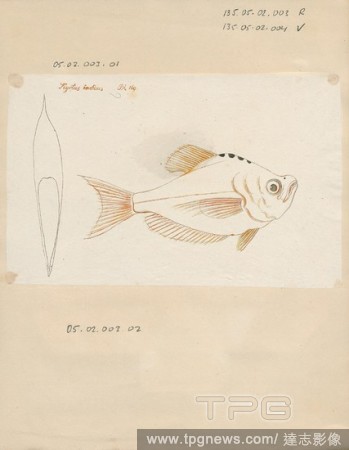
Editorial Kurtus indicus, Print, Kurtus indicus, the Indian humphead, is a species of nurseryfish native to fresh, brackish, and marine waters of the coastal regions of southern Asia from India to southeast China and Indonesia. It resembles the closely related K...
- 2019-11-18
- 2
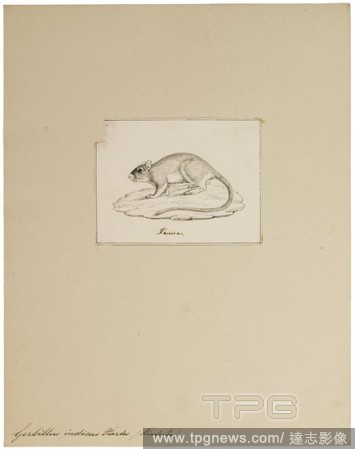
Editorial Gerbillus indicus, Print, Gerbillus is a genus that contains most common and the most diverse gerbils. In 2010, after morphological and molecular studies Dipodillus was ranged as a subgenus of Gerbillus, however some taxonomic authorities continue to s...
- 2019-11-18
- 1

Editorial Anser indicus, Print, The bar-headed goose (Anser indicus) is a goose that breeds in Central Asia in colonies of thousands near mountain lakes and winters in South Asia, as far south as peninsular India. It lays three to eight eggs at a time in a groun...
- 2019-11-18
- 1
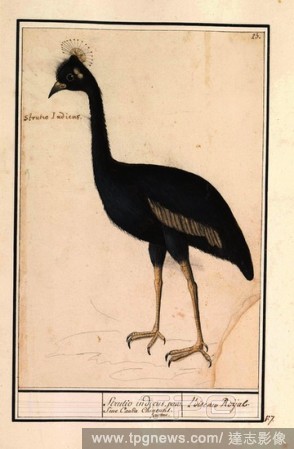
Editorial Zwarte kroonkraan (Balearica pavonina). Strutio indicus, pavo / L'oiseau Roijal (title on object). Draughtsman: Anselmus Bo?tius de Boodt. Draughtsman: Elias Verhulst. Dating: 1596 - 1610. Place: Praag. Measurements: h 262 mm ? w 176 mm.
- 2019-04-16
- 2
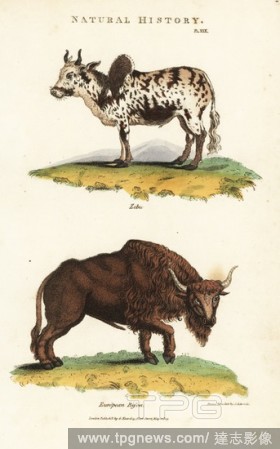
Editorial Zebu humped cattle, Bos indicus, and European bison, Bison bonasus. Handcoloured copperplate engraving after Sydenham Edwards from John Mason Good's Pantologia, a New Encyclopedia, G. Kearsley, London, 1813.
- 2019-02-22
- 1
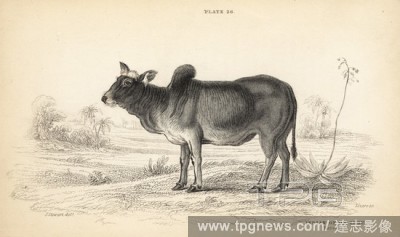
Editorial Indian ox or zebu, Bos primigenius indicus (Taurus indicus). Handcoloured steel engraving by Lizars after an illustration by James Stewart from William Jardine's Naturalist's Library, Edinburgh, 1836.
- 2019-02-22
- 1

Editorial Tamarind, Tamarindus indicus. Handcoloured woodblock engravings from James Main's Popular Botany, Orr and Smith, London, 1835. James Main (1775-1846) was a Scottish gardener, botanist and writer.
- 2019-02-22
- 1
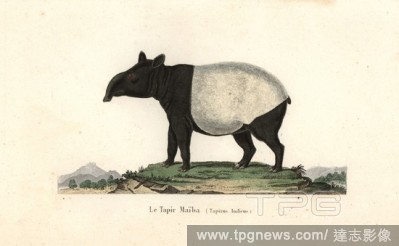
Editorial Malayan tapir, Tapirus indicus. Endangered. Handcoloured copperplate engraving from Rene Primevere Lesson's Complements de Buffon, Pourrat Freres, Paris, 1838.
- 2019-02-22
- 1

Editorial Dugong, Dugong dugon (Dugong of the East Indies, Dugungus indicus). Handcoloured steel engraving by W.H. Lizars after an illustration by James Stewart from Robert Hamilton's Amphibious Carnivora, part of Sir William Jardine's Naturalist's Library: Mamm...
- 2019-02-22
- 1
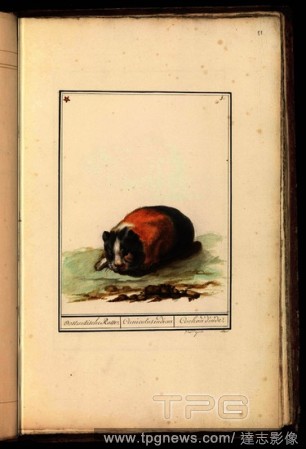
Editorial Cavia (Cavia). Oostindische Ratte. / Cuniculus indicus / Cochon d'inde (title on object). Artist: Boel (mentioned on object). Draughtsman: anonymous. Dating: 1790 - 1814. Place: Southern Netherlands. Measurements: h 430 mm ? w 270 mm.
- 2019-02-01
- 1
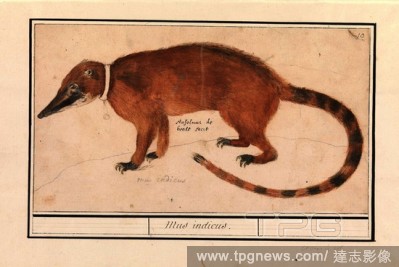
Editorial Rode neusbeer of coatimundi (Nasua nasua). Mus indicus (title on object). Draughtsman: Anselmus Bo?tius de Boodt (mentioned on object). Dating: 1596 - 1610. Place: Praag. Measurements: h 166 mm ? w 297 mm.
- 2019-01-25
- 1
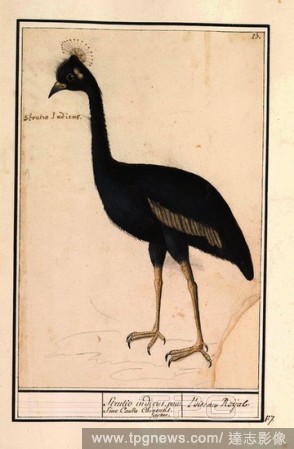
Editorial Zwarte kroonkraan (Balearica pavonina). Strutio indicus, pavo / L'oiseau Roijal (title on object). Draughtsman: Anselmus Bo?tius de Boodt. Draughtsman: Elias Verhulst. Dating: 1596 - 1610. Place: Praag. Measurements: h 262 mm ? w 176 mm.
- 2019-01-25
- 2
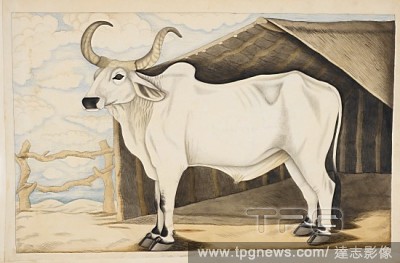
Editorial Zebu Bull ‘Bos indicus’. Wellesley Albums. 1798 - 1805. Source: NHD 32/51.
- 2019-01-24
- 1
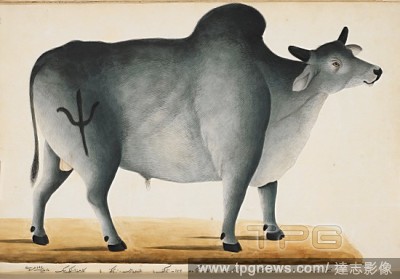
Editorial Zebu Bull (Brahman breed) ‘Bos indicus’. Wellesley Albums. 1798 - 1805. Source: NHD 32/50.
- 2019-01-24
- 1

Editorial Red-Wattled Lapwing ‘Vanellus indicus’. Wellesley Albums. 1798 - 1805. Watercolour. Source: NHD 29.
- 2019-01-24
- 1
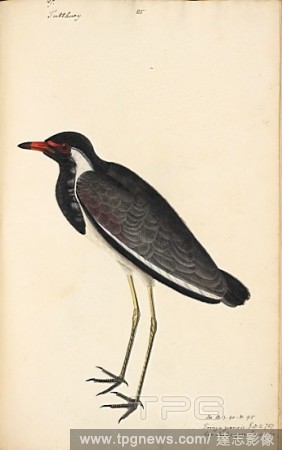
Editorial Red-Wattled Lapwing ‘Vanellus indicus’. Wellesley Albums. 1798 - 1805. Watercolour. Source: NHD 29/85.
- 2019-01-23
- 1

Editorial Zebu Bull ‘Bos indicus’. Wellesley Albums. 1798 - 1805. Source: NHD 32/51.
- 2018-12-06
- 1
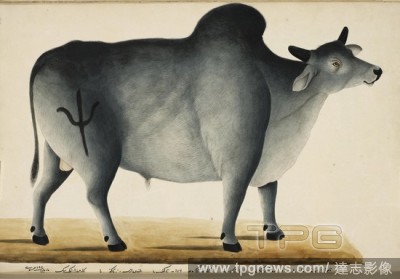
Editorial Zebu Bull (Brahman breed) ‘Bos indicus’. Wellesley Albums. 1798 - 1805. Source: NHD 32/50.
- 2018-12-06
- 1

Editorial Malay Tapir (Tapirus Indicus Desmarest). Young Sumatran tapir, probably by J.Briois, March 1824. . From an album of 51 drawings of birds and mammals made at Bencoolen (Tapirus Indicus Desmarest)., Sumatra, for Sir Stamford Raffles. c.1824. Gouache on E...
- 2018-12-06
- 1
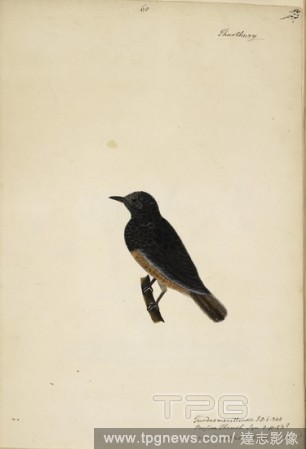
Editorial Red-Wattled Lapwing ‘Vanellus indicus’. Wellesley Albums. 1798 - 1805. Watercolour. Source: NHD 29.
- 2018-12-06
- 1
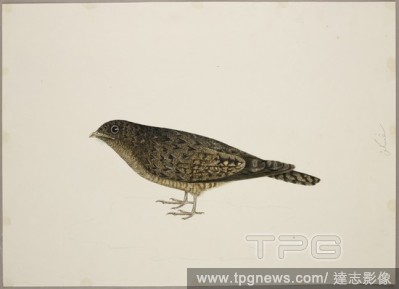
Editorial Nightjar. c.1824. Nightjar of the genus 'Caprimulgus', probably a female Jungle Nightjar ('Caprimus Indicus'). From an album of 51 drawings of birds and mammals made at Bencoolen, Sumatra, for Sir Stamford Raffles. Watercolour. Originally published/pr...
- 2018-12-06
- 1
 Loading
Loading 